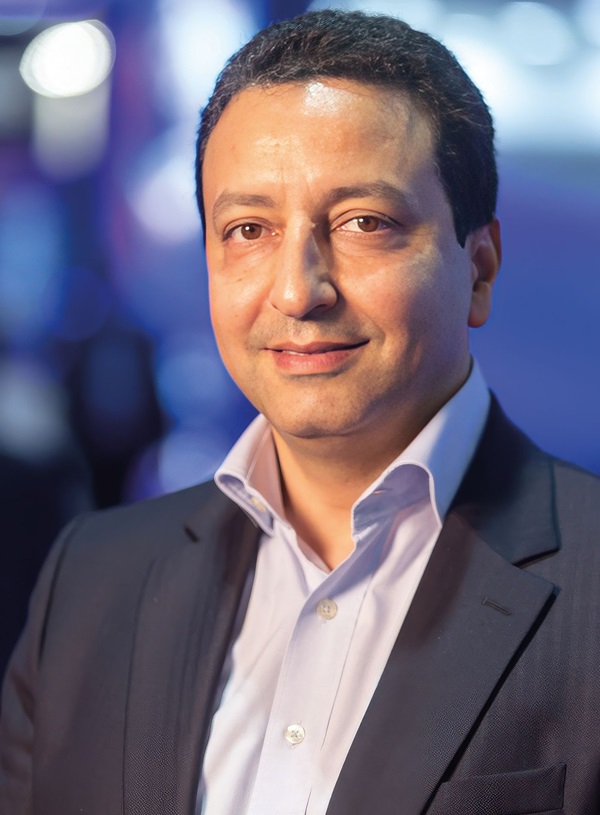 In the world of entertainment, audience measurement has long posed a significant challenge, particularly for satellite channels. Unlike digital platforms and streaming services, satellite TV lacks a return path, making it difficult to gauge viewership accurately. With an ever-increasing number of channels and satellite offerings, traditional methods of measurement have struggled to keep pace, leading to a lack of confidence among advertisers who prefer the precise data collected by streaming services. This, in turn, has hindered the ability of satellite channels to demonstrate their true value. Conventional attempts to measure viewership using proprietary devices from audience measurement companies have proven costly and unsuitable for satellite’s regional reach.
In the world of entertainment, audience measurement has long posed a significant challenge, particularly for satellite channels. Unlike digital platforms and streaming services, satellite TV lacks a return path, making it difficult to gauge viewership accurately. With an ever-increasing number of channels and satellite offerings, traditional methods of measurement have struggled to keep pace, leading to a lack of confidence among advertisers who prefer the precise data collected by streaming services. This, in turn, has hindered the ability of satellite channels to demonstrate their true value. Conventional attempts to measure viewership using proprietary devices from audience measurement companies have proven costly and unsuitable for satellite’s regional reach.
Often, these spots are undervalued, particularly for some emerging and innovative channels that do attract an audience but struggle to demonstrate it. Programme scheduling and content choices are sometimes based on customer feedback from the internet and social media, rather than actual measurements.
Recognising the need for a reliable audience measurement tool for satellite TV, Badis Khaldi, a seasoned professional with a background in both the satellite industry and industrial embedded systems, embarked on developing a groundbreaking solution. His experience working with MENA customers for a major satellite operator led him to note the challenges in valuing viewership, especially during peak times like Ramadan when traditional surveys yielded conflicting results. This experience, combined with his expertise in IT services, fueled his motivation to create a tool that could provide real-time, accurate data on viewership.

“I was working as Regional Director with a major satellite operator for the MENA region at the time. In this region, satellite television is still very prevalent, and there were always two television channels that were fierce competitors especially during Ramadan. Each tried to outdo the other, and the result was two traditional audience surveys that yielded completely different results. The transition from SD to HD and UHD channels was the other big challenge. We needed a solution that could measure viewership across different resolutions and provide actionable insights to our customers,” explains Khaldi.
This led him to develop the Audimatic audience measurement tool, which provides detailed, real-time data on viewer behaviour, capturing metrics such as channel names, frequencies and viewer engagement. The development of Audimatic began in 2021, with an initial focus on IPTV. At CABSAT 2022, Badis unveiled the first version of the solution and it generated considerable interest. However, the real breakthrough came when the tool was adapted for satellite audience measurement, where it collects data from set-top boxes, tracking channel changes and viewer habits with millisecond-level precision.
“Why do we focus only on Ramadan to increase advertising revenues? Viewers remain potential customers for the remaining 11 months as well. This tool can help them do that,” explains Khaldi.
Managing the massive influx of data, however, was a significant challenge. During peak hours, the system handled up to 80,000 simultaneous connections, requiring adjustments to server load and data processing cycles.
“Our initial data acquisition phase was overwhelming,” Khaldi recounts. “We had to refine our architecture and implement a one-second data cycle, which reduced the load, the number of logs, and maintained a higher level of precision for tracking an advertisement or an official speech. We still had to progress and develop the second phase, which is the data restitution. This was done with data scientists and gradually adjusted according to customer needs.”
Audimatic leverages embedded processes in consumer set-top boxes to collect viewing data. “Clearly, the box must be connected to the internet for one reason or another. The first comment from people is that satellite set-top boxes are not connected to the internet. What they forget is that most set-top boxes produced and sold in the last 10 years have built-in Wi-Fi and Ethernet modules. Even if only 10 to 20% are connected, that still represents hundreds of thousands of receivers providing us with audience data,” explains Khaldi.
The tool’s architecture emphasises simplicity and transparency, focusing on user experience rather than intricate satellite infrastructure.
“It’s the wrong approach to focus on satellite broadcasting infrastructure. What we needed was a user-oriented approach. A viewer who buys an antenna and a set-top box will install it at home, scan the satellites, and see thousands of channels on his receiver. The goal of true audience measurement is to know which of the thousands of channels offered to viewers they are watching, for how long, and on what device.”
Khaldi’s audience measurement tool is designed to work with various set-top boxes and satellite receivers, ensuring comprehensive coverage across different channels and regions. “The strength of satellite TV is its vast channel selection,” Khaldi notes. “Our tool captures viewership data across all these channels, providing a complete picture of audience engagement. Essentially, when a viewer switches on the device, we collect per second what channel they have chosen, the name of the satellite and the transponder. Each time a channel is changed, it is recorded in the same way. We, therefore, build up a history of the channels watched by each device with the information of the country, city, satellite, transponder, resolution and channel type. Once we have a history for several devices in several cities, we have a panel on which we can build an audience according to the customer’s needs.
Data is collected in real-time and processed to ensure accuracy and reliability, with redundancy built into the system to validate collected data. “My experience in aeronautics and other critical industries has helped me a lot. To ensure the safety of an aircraft, the measurements must be redundant, as must the servers. Likewise, here each set-top-box sends the logs to two different databases. Another server compares the logs and ensures that the data has been collected and recorded in the same way. All the data is stored in GMT, and we created a virtual zapping channel to compare with the recorded production and check the integrity of the process,” Khaldi explains.
Audience measurement on satellite channels can truly change the face of entertainment. “A channel that had consistently flat viewership except for one period each day experienced a spike four times its usual audience. This was due to a programme by a producer and young artists that audiences loved. The channel was unaware of this and couldn’t leverage it with advertisers. With an audience measurement tool like this, every channel can determine their true position and then define their strategy for improvement. Channel directors and advertising agencies must invest in such technologies and integrate data scientists who rely on measurements to adapt their offerings to their clients,” Khaldi explains.
Impressively, the tool is scalable. “Our tool will always record the chosen channels’ historical viewership on the user’s set-top box. And no matter which country the viewer is in, the system will work in the same way and continuously,” adds Khaldi.
One of the biggest challenges today is not so much the data as being able to analyse the data accurately and in a timely fashion. Khaldi says the company has addressed this successfully.
“Initially, we developed online visualisation, but this was expensive in terms of resources and calculation time. As the panel grew, with over 300,000 set-top boxes connected to date, we kept this function for internal system supervision. With the multitude of different requests and visualisations depending on the client and what data they wanted to cross-reference, we calculated every evening on dedicated data warehouse data base servers all intermediate data needed to display the results. We also standardise the same client requirements over all countries, and we calculate them in advance every night so they will be available the next day. A new customer with a new way of comparing figures will need from us to reformulate his question with the right SQL queries and deliver him the dashboard figures the next day. This is nothing for those used to the timeframes of traditional surveys.”
Looking ahead, Audimatic plans to expand its capabilities further. Upcoming features include enhanced data visualisation tools, automatic ad counting and AI-driven insights. The team is working on integrating programme names into audience data and developing AI models to better understand viewer behaviour and preferences.
“We’re also exploring the potential of AI to enhance our data analysis,” Khaldi reveals. “Our goal is to provide even more granular insights and support our clients in optimising their strategies.”
Currently, Audimatic is focused on the MENA region and Europe, with plans to expand to other markets. The tool’s scalability ensures it can handle the growing number of channels and viewers as the satellite TV industry evolves. Strategic partnerships and collaborations are also being considered to enhance the tool’s capabilities and market reach.
Khaldi advocates for industrywide standards for audience measurement, highlighting the disparity between IPTV and satellite data collection. He envisions a more standardised approach that could address the challenges faced by satellite broadcasting and improve the accuracy of audience data.
“My tool has highlighted the need for better standards in satellite broadcasting,” he concludes. “By establishing open systems and sharing data, we can enhance the entire industry and ensure a more accurate measurement of viewership.”
Audimatic represents a significant advancement in audience measurement, offering a solution that addresses the unique challenges of satellite TV while providing valuable insights for broadcasters, advertisers, and content creators. As the tool continues to evolve, it promises to reshape the landscape of audience measurement and drive greater precision in understanding viewer engagement.












Add Comment